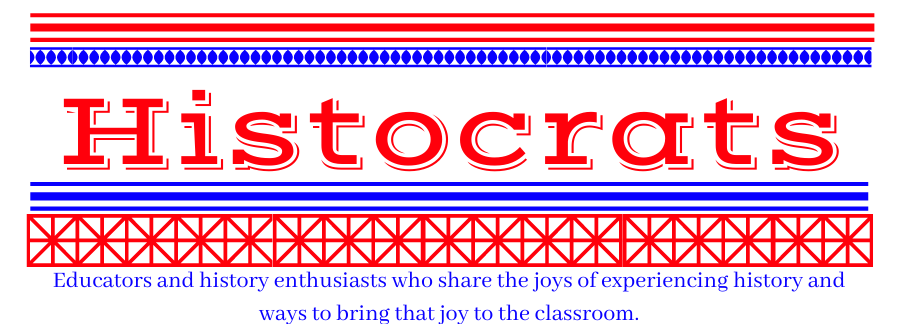Viewing
habits are changing every day. Ask
someone in his twenties or younger, and he’ll probably tell you he watches less
“live” television and more alternative television: itunes, Hulu, recorded material on DVR, and
YouTube for example. I regularly use
YouTube to find clips for class myself.
You truly can find just about anything on YouTube, including lots of
history. Here are some examples of YouTube channels for you to check out. Some contain clips good for classroom use;
others might be best for your own entertainment and education.
You
may subscribe to any of these channels and see all their posted videos and get
notified when new ones are posted.
There are a number of
channels that contain documentary clips or whole documentaries on a wide
variety of topics: Alpha History,
History Essentials, History Tube, Greater History, and Superior
History to name a few.
The following series
all contain videos that I either use in class or recommend to students. Keith Hughes (HipHughes) is a
history teacher in New York who has created a channel of videos designed to
review for the New York state Regents Exams.
His videos are pretty spartan, basically just him talking to the camera,
but he can hold your attention. His
videos can be a bit long, as long as 20 minutes or more, and he even has a
couple of marathon review videos that are a couple of hours long, but they
cover the essentials from a different point of view.
By now, everyone’s
probably heard of Khan Academy, and it’s a great story. As of now, their history offerings are pretty
slim, and their primary focus is math and the sciences. What’s there is good; there’s just not much.
How it Happens
is also geared more toward math and science, but there are a few history
videos, mostly of the variety in which someone draws as someone narrates.
TED-Ed’s
self-description: “TED-Ed's Original videos aim to capture and amplify the
voices of the world's greatest educators. Within the growing TED-Ed video
library, you will find carefully curated educational videos, many of which
represent collaborations between talented educators and animators.”
I use CrashCourse
videos all the time in class. Author
John Green presents 10-12 minute videos on topics in US and World History, and
his brother Hank presents chemistry videos.
They are fast-paced, factual, insightful, and humorous. While AP and honors kids love them, the
videos may not be quite as accessible in regular classes or lower grades.
The historyteachers
channels features well-produced music videos about various events, mostly in
world history, with lyrics set to popular songs. For example, a song about Marie Antoinette
set to Lady GaGa’s “Paparazzi.” They’re
fun and catchy.
And then there are the
YouTube channels you might not want to show in class, but they can be lots of
fun for you.
Ask A Slave
was created by an actress who has years of experience portraying a slave woman
at George Washington’s Mount Vernon and other historical venues. In the videos, she stars in the series as
Lizzie Mae, housemaid to the Washingtons, and she answers actual questions from
visitors that she has been asked over the years. However, she answers them as she only wished
she could answer them while on the job.
Some of the questions are astoundingly …… shall we say misguided or
naïve, and her answers are hilarious.
Ever wonder what a
debate between Blackbeard and Al Capone would look and sound like? Me neither.
Some twisted minds did, however, and made it a rap battle. Epic Rap Battles in History pits two
historical figures against each other in a fierce rhyming war: Rasputin vs Stalin, Tesla vs Edison, Babe
Ruth vs Lance Armstrong, just to name a few.
There is an occasional swear word and some sexual innuendo that make
them un-classworthy, but they are all entertaining.
John Green also appears
in many of the videos on the Mental Floss channel, brought to you by the
people behind the magazine of the same name.
They specialize in all aspects of historical trivia, lists, and fun
facts. Almost every video guarantees
that you will hear something you never knew before.
The Colony Bay
channel features a web series called “Courage, New Hampshire.” Set during the American Revolution, it’s a
drama about the role of a fictional town and its citizens.
I’m sure I’ve only
scratched the surface. Check these out
if you want, and if you know of other YouTube channels for history buffs, comment and tell us about them.

